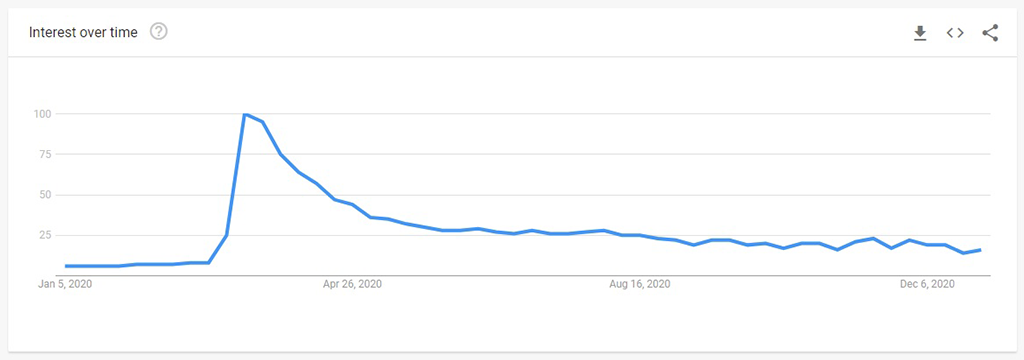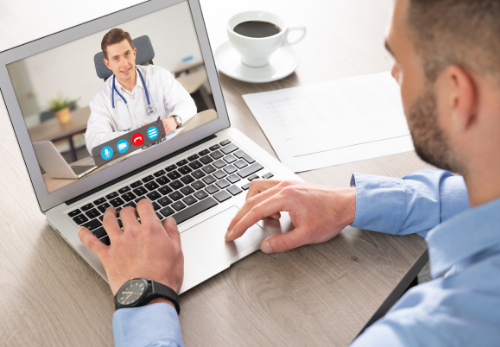The demand for telehealthcare services has skyrocketed. Google shows a huge spike in searches for “telehealth” between March 1 and March 21, 2020 – at the start of the COVID-19 pandemic. And the interest in the topic hasn’t gone back down to pre-pandemic levels. Telehealth platforms are here to stay, helping with behavioral health, physical health, and COVID-19 assistance.

While the adoption of HIPAA-compliant telehealth platforms is positive for the public, many new users of this technology employ only a fraction of its capabilities. The use cases are numerous. Below, we discuss how your hospital or practice – in a pandemic or not – could get the most out of a CPaaS and communication workflow automations.
Maximizing telehealthcare services before appointments
First impressions are important. They tell patients what to expect from your organization. If a potential patient chooses to call your hospital as their first point of contact, a robust telehealth system can record that preference and personalize the experience with a little technology.
First impressions and preferences
By setting up your telehealth system to identify a potential patient’s phone numbers by area code, it can start things off on the right foot. For example, a number starting with +52-744 could automatically be identified as a phone number from Acapulco, Mexico. A smart telehealth system would then talk to the potential patient in Spanish. No button pressing required. You’re speaking their language and off to a good start.
Connecting your telehealth system to a healthcare customer relationship management (CRM) system to save caller’s language preference. From then on, phone calls, emails, and texts can be sent in their preferred language.
Scheduling appointments
Now that your service speaks the caller’s language, it can direct them to the right department without taking up staff’s time. With Smart Assistant and natural language processing (NLP), your potential patient can simply tell the system what their question is and connect to the human in that department. Some tasks, like scheduling an appointment, can be done without staff at all. Callers simply schedule their appointment with the system and hang up. Fast and easy.
In this demonstration, you can see how automatic and fast onboarding a patient can be. With telehealthcare tools like Smart Assistant, your callers can be sent to an office assistant when they need a human, but they probably won’t. Many common questions and requests can be handled without the need for hospital or provider staff on the phone.
Pre-appointment perks
With an appointment scheduled a few weeks out, a telehealth system can send a first-time patient an automated call, text, or email with your healthcare CRM keeping track of every interaction. Reminding patients about appointments is time-consuming, and not reminding patients can result in no-shows. Frustrating and costly, automated reminders can reduce no-shows without putting extra work on front office staff.
What’s more, if the patient has a procedure that requires some preparation – like fasting or hydrating before coming to the hospital – your telehealthcare system can send automatic reminders days before.
Getting paperwork out of the way early can also be automated. Setting up a Smart Assistant to notify patients and record their answers requires just a few minutes.
The convenience of automation is great for staff and callers, but there’s so much more a telehealth system can do to help patients stay healthy after an appointment, procedure, or surgery to keep them coming back to your practice.
Do you want to learn more about modernizing your contact center and accelerating customer engagement with generative AI and automation? Schedule an AI and automation Customer Interaction Intent Study with IntelePeer now.
Amplify telehealth communication post-appointment
Great service can continue after a patient’s automated scheduling and pre-appointment experience. After their visit, the patient can receive additional reminders to help them recover and stay healthy.
Automated reminders and information via text and phone calls
A simple text could provide patients with the doctor’s notes if your CRM collects that information. Or maybe the doctor provides some outpatient reminders after a major surgery. With automated voice or SMS communications, a patient can stay on top of their at-home recovery or treatment. And they can call or text your Smart Assistant for prescription drug information, FAQ’s, or contact requests for more complicated questions.
Track your patients’ satisfaction
After easily scheduling appointments and getting on-demand information post visit, it’s time to measure the success of the patient experience. Surveys can be sent through a variety of channels. In our example, your patient called to schedule an appointment, so their preference is to communicate over the phone.
Setting up an automatic patient survey – over the phone, SMS, or email – doesn’t take much time after easily integrating with your CRM platform. And the value can be insightful for your organization. Besides a one to 10 satisfaction rating, you can record a short voice response from your patient. With telehealth communication technology, this voice response can be automatically transcribed and assigned a sentiment.
If the sentiment is positive, it could be a good idea to automate an SMS or email to direct the patient to a rating site of your choice, such as Google Reviews. If the sentiment is negative, a staff member could follow up to address any issues or concerns the patient had during their experience.
Keeping patients coming back with telehealthcare services
Patient expectations are high, and self-service is in demand. Fortunately, telehealth communication automation can help fill this demand without taking up too much time from IT, operations, or marketing departments.
There’s so much more telehealth communication automation can do to improve trust with patients and improve their experience. Security, like two-factor authentication, can help patients safely sign into online portals and prevent hacking.
Your organization can also quickly provide updates during public health emergencies with rapid updates and a dedicated emergency hotline. It can provide basic information, answer FAQ’s, and be updated in minutes during uncertain times. Features also include the ability and convenience to automate patient reminders and take payments over the phone.
Plus, your organization can stay top-of-mind months after their experience with automated patient lifecycles. Remind them when to schedule their next annual appointment. Now the patient journey has come full circle – from scheduling their initial appointment to being reminded about their next annual visit. Reminders, on-demand service, and pre-planned automated communications can help patients, administration, and your organization work better together.

